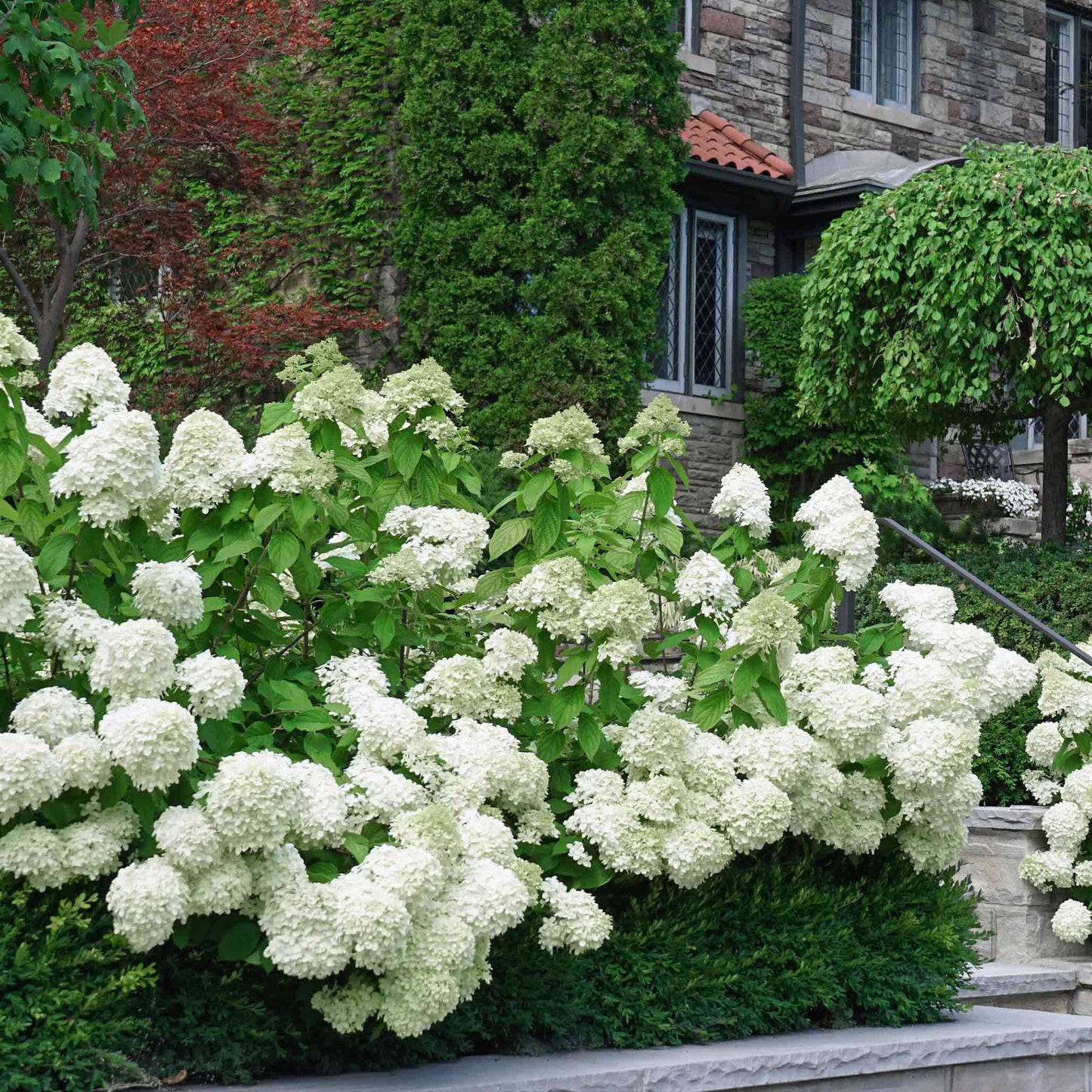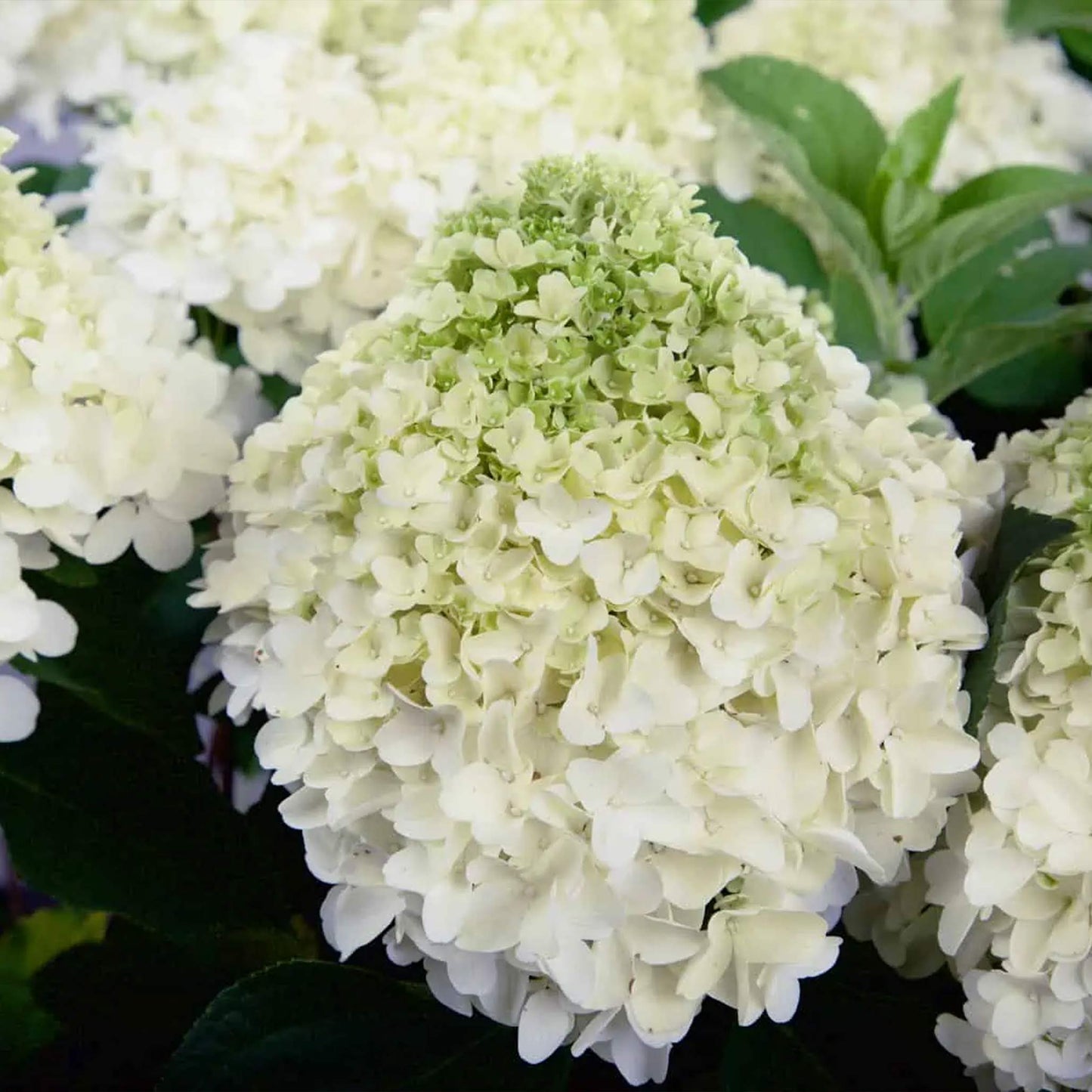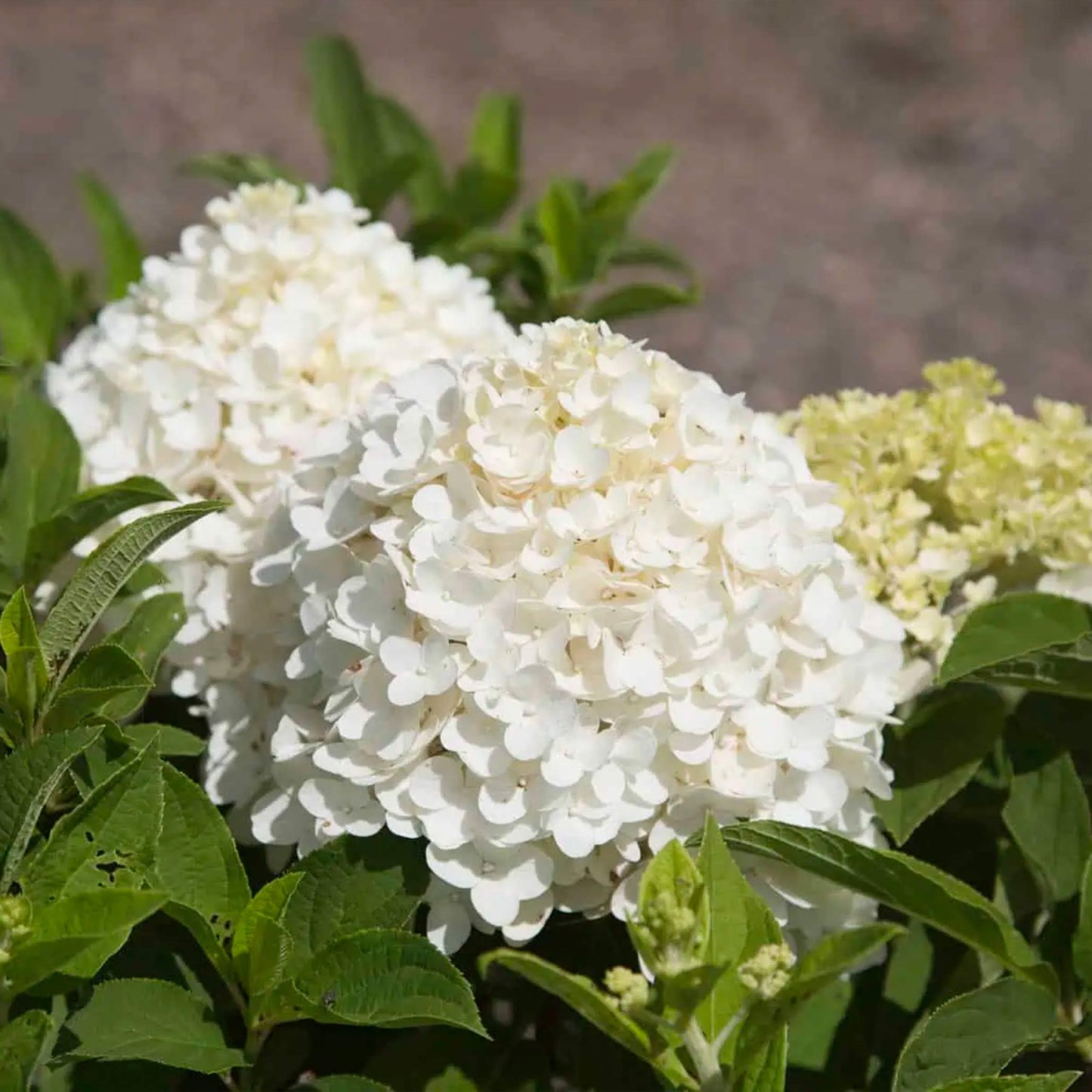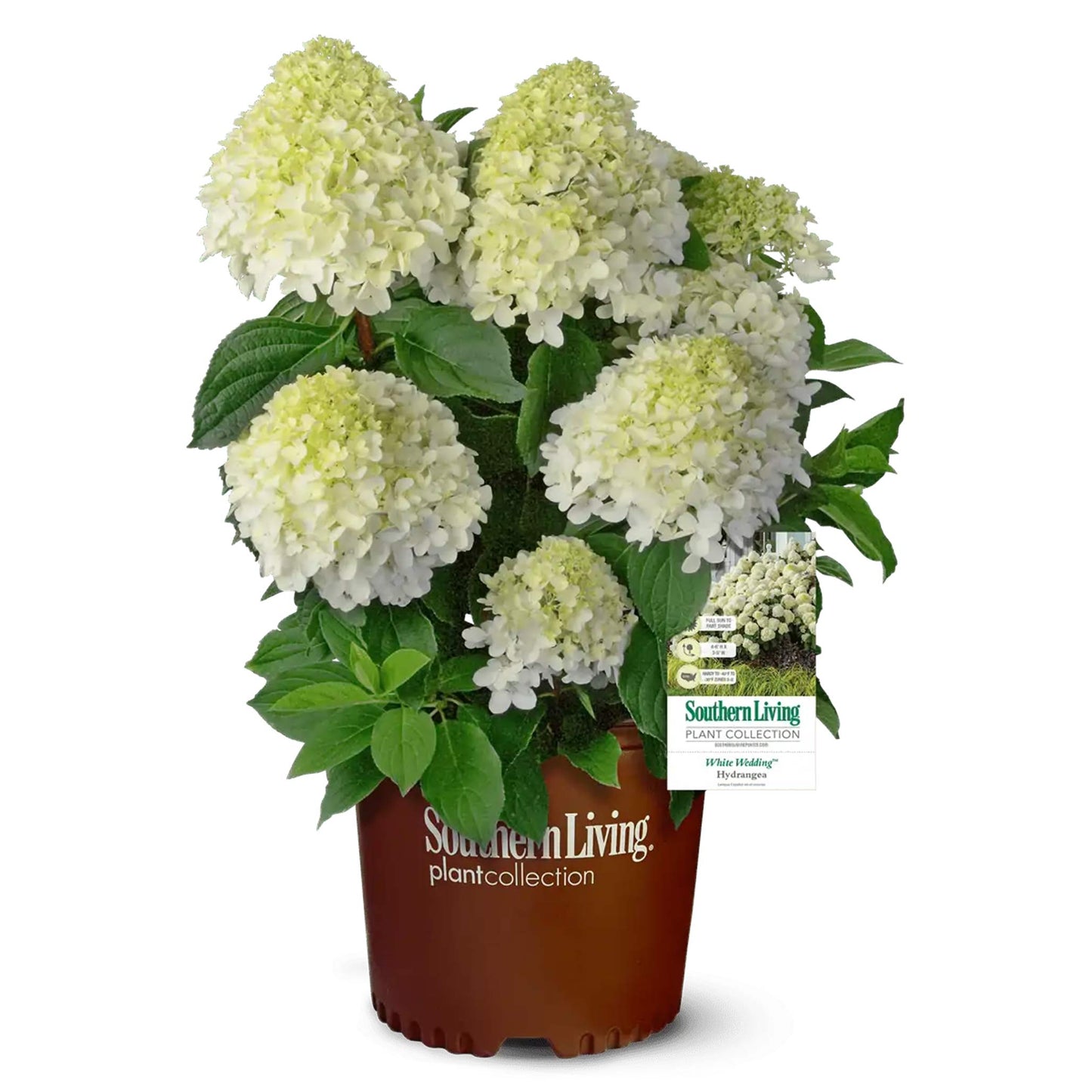White Wedding Hydrangea
White Wedding Hydrangea
SKU:DEC-HYD-WHI-NA-3G
Bring Home the Blooming Elegance of White Wedding Hydrangeas!
Imagine a lush, vibrant garden that turns heads and sparks conversations. With the White Wedding Hydrangea, you're not just planting a flower; you're cultivating a centerpiece that exudes sophistication and charm.
Why White Wedding Hydrangeas?
- Everlasting Appeal: These beauties boast large, round clusters of pristine white flowers that transform any space into a serene retreat.
- Season-Long Show: Enjoy their grand display from early summer to late fall, as they keep your garden dressed in its best.
- Low Maintenance: Spend less time worrying and more time admiring. These hydrangeas are easy to care for, making gardening a breeze.
- Versatile Vibes: Whether it's a cottage garden or a modern landscape, these flowers fit flawlessly into any garden theme.
Planting & Care Tips
Thriving in partial to full sun, White Wedding Hydrangeas are happy with regular watering and a little bit of love. They're hardy and adaptable, asking for nothing more than a spot in your garden to shine.
Ready to Say 'I Do'?
Don't wait for a special occasion to bring these stunning hydrangeas into your life. Order your White Wedding Hydrangea today and watch your garden transform into a picturesque paradise that's the envy of the neighborhood!




Product Details
-
Product Category
Flowering Shrubs
-
Product Subcategory:
Hydrangeas
-
Botanical Name:
Hydrangea paniculata ‘LeeP1’ PP28973
-
Does Not Ship To:
AZ, OR
-
Mature Height:
4-6 ft.
-
Mature Width:
4-6 ft.
-
Growing Zone:
4-9 outdoors
-
Indoor Growing:
-
Sunlight:
Full-Part Sun
-
Growth Rate:
Moderate
-
Harvest Time:
-
Bloom Time:

Planting Directions
<h2>Planting White Wedding Hydrangea</h2>
<p>White Wedding Hydrangeas are known for their large, white blooms and are a popular choice for gardeners. Here's how to plant them:</p>
<ul>
<li>Choose a location with morning sun and afternoon shade.</li>
<li>Ensure the soil is rich, well-draining, and slightly acidic.</li>
<li>Plant in spring or fall when temperatures are mild.</li>
<li>Dig a hole as deep as the root ball and 2-3 times wider.</li>
<li>Place the plant in the hole and backfill with soil, tamping down gently.</li>
<li>Water thoroughly after planting to settle the soil.</li>
<li>Mulch around the base to retain moisture and regulate soil temperature.</li>
</ul>
<h2>Care and Maintenance</h2>
<p>For ongoing care of your White Wedding Hydrangea:</p>
<ul>
<li>Water regularly to keep the soil moist but not soggy.</li>
<li>Apply a slow-release fertilizer in early spring.</li>
<li>Prune in late winter or early spring, removing dead wood and shaping the plant.</li>
<li>Watch for pests and diseases and treat accordingly.</li>
</ul>
<p>Hydrangeas typically do not require pollination assistance as they are mostly self-pollinating, but attracting bees can help increase bloom. Harvesting is not commonly done for hydrangeas, as they are primarily ornamental, but you can cut flowers for arrangements once they are fully bloomed. Place cut flowers in water immediately for longer vase life.</p>
<p>Remember, gardening is about learning through experience, so don't hesitate to adjust your care routine as you learn what works best for your plants and local conditions.</p>

FAQs
<h2>FAQs for the White Wedding Hydrangea</h2>
<h3>1. How do I plant White Wedding Hydrangea?</h3>
<ol>
<li><strong>Choose the Right Location:</strong> Select a spot with morning sun and afternoon shade. Ensure the soil is well-draining and rich in organic matter.</li>
<li><strong>Prepare the Soil:</strong> Amend the planting area with compost to enrich the soil. If your soil is clay-heavy, consider adding sand or peat moss to improve drainage.</li>
<li><strong>Dig the Hole:</strong> Make the hole twice as wide and just as deep as the root ball of your hydrangea.</li>
<li><strong>Plant the Hydrangea:</strong> Remove the plant from its container and gently loosen the roots. Place it in the hole, ensuring the top of the root ball is level with the soil surface. Backfill the hole, gently firming the soil.</li>
<li><strong>Water Thoroughly:</strong> After planting, water the hydrangea deeply to settle the soil around the roots and help eliminate air pockets.</li>
</ol>
<h3>2. How often should I water my White Wedding Hydrangea?</h3>
<p><strong>Watering Frequency:</strong> Water your hydrangea deeply once a week, ensuring you moisten the soil to a depth of about 8 inches. During hot or dry periods, you may need to water more frequently to maintain moist, but not waterlogged, soil.</p>
<h3>3. What is the best fertilizer for White Wedding Hydrangea?</h3>
<ul>
<li><strong>Slow-Release Fertilizer:</strong> Apply a slow-release, balanced fertilizer (like a 10-10-10 formula) in early spring as new growth appears.</li>
<li><strong>Compost:</strong> Adding compost around the base of the plant in spring can provide additional nutrients and enhance soil health.</li>
<li><strong>Acidic Soil Amendments:</strong> If you desire deeper blue flowers, consider applying aluminum sulfate to acidify the soil. However, this is more applicable to other hydrangea varieties, as White Wedding Hydrangeas typically remain white.</li>
</ul>
<h3>4. How do I ensure my White Wedding Hydrangea blooms beautifully?</h3>
<ol>
<li><strong>Proper Pruning:</strong> Prune in late winter or early spring before new growth begins. Remove only dead wood and spent flowers, as this variety blooms on old wood.</li>
<li><strong>Adequate Sunlight:</strong> Ensure your hydrangea gets morning sun and afternoon shade for optimal growth and bloom.</li>
<li><strong>Regular Watering:</strong> Keep the soil consistently moist, especially during the blooming period.</li>
<li><strong>Appropriate Fertilization:</strong> Fertilize in the spring with a balanced, slow-release fertilizer to support healthy growth and flowering.</li>
</ol>
<h3>5. How do I protect my White Wedding Hydrangea from pests and diseases?</h3>
<ul>
<li><strong>Mulching:</strong> Apply a layer of mulch around the base of the plant to retain moisture, regulate soil temperature, and reduce weed competition.</li>
<li><strong>Proper Spacing:</strong> Ensure adequate space between your hydrangeas and other plants to promote good air circulation, which helps prevent fungal diseases.</li>
<li><strong>Inspect Regularly:</strong> Check your plants regularly for signs of pests or disease. Early detection is key to effective management.</li>
<li><strong>Natural Remedies:</strong> Use neem oil or insecticidal soap to treat pests. For fungal issues, remove affected parts and consider using a fungicide, following label instructions closely.</li>
</ul>





